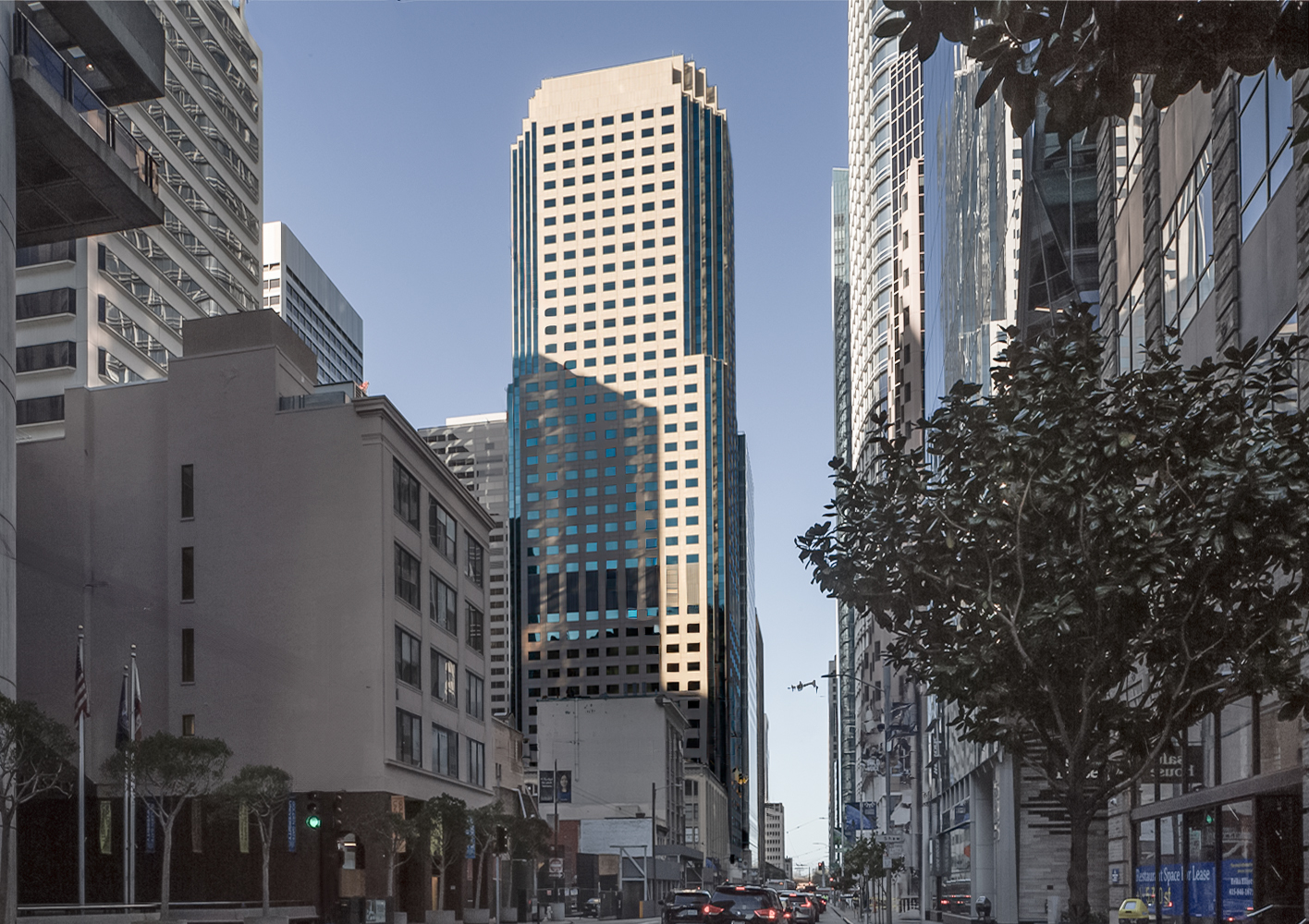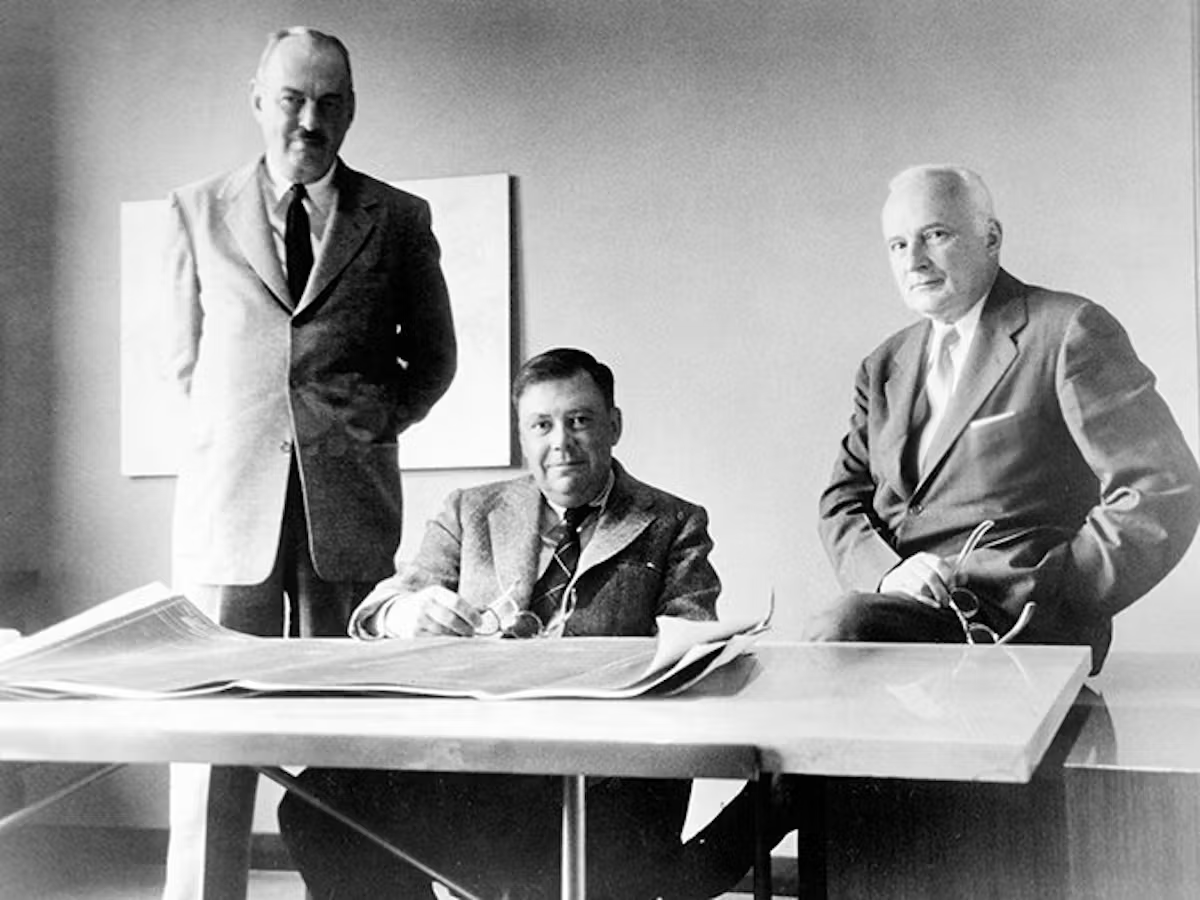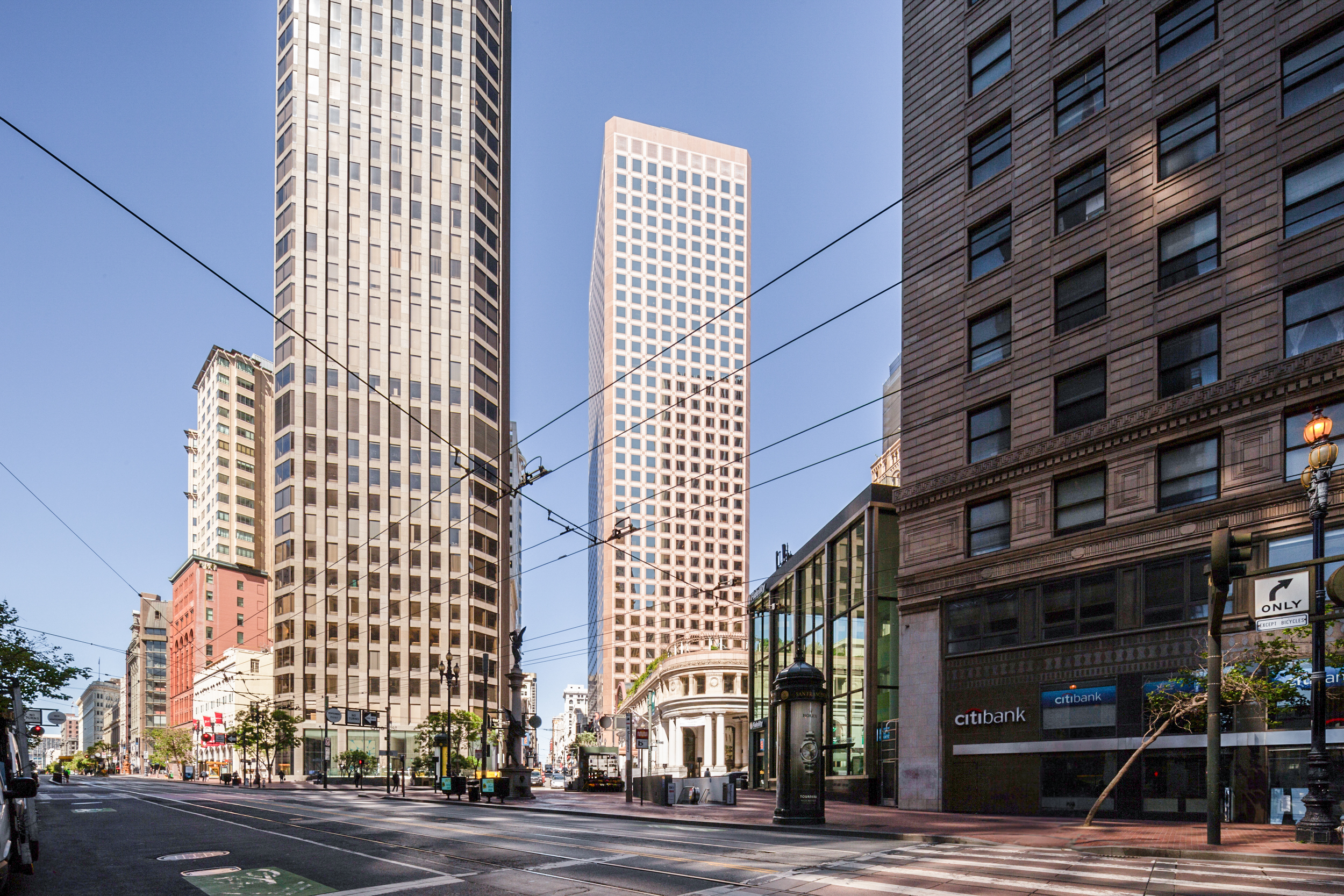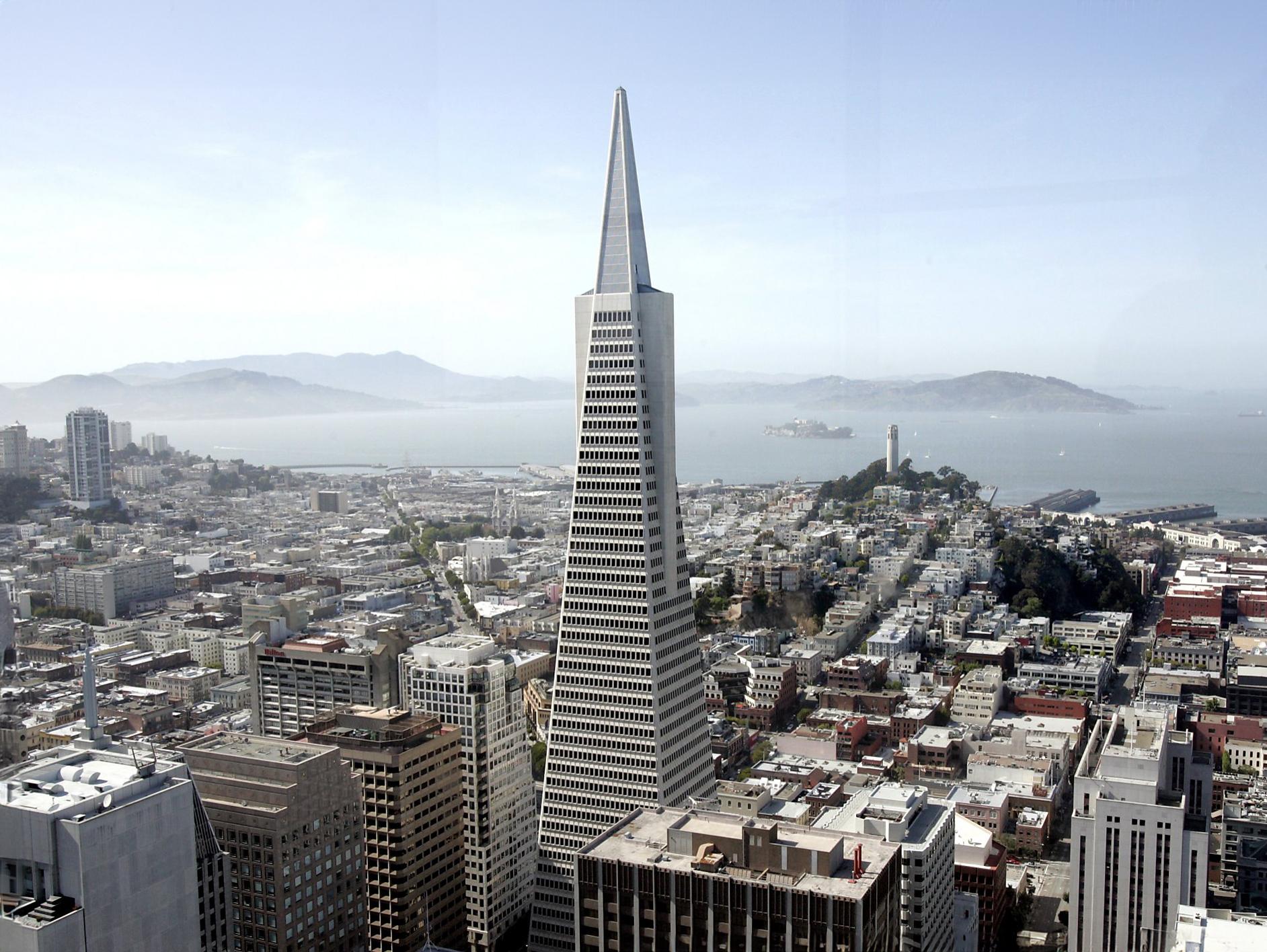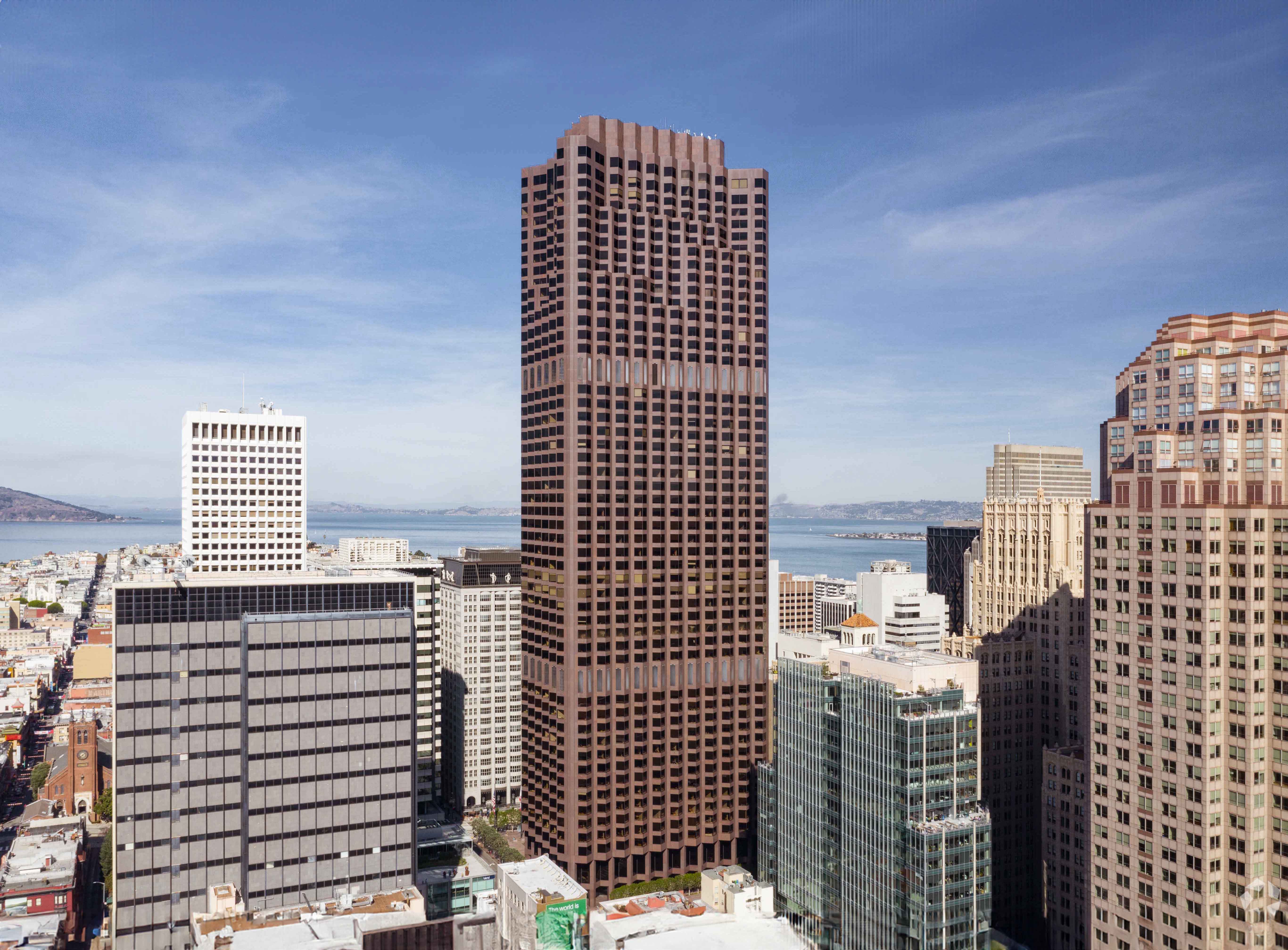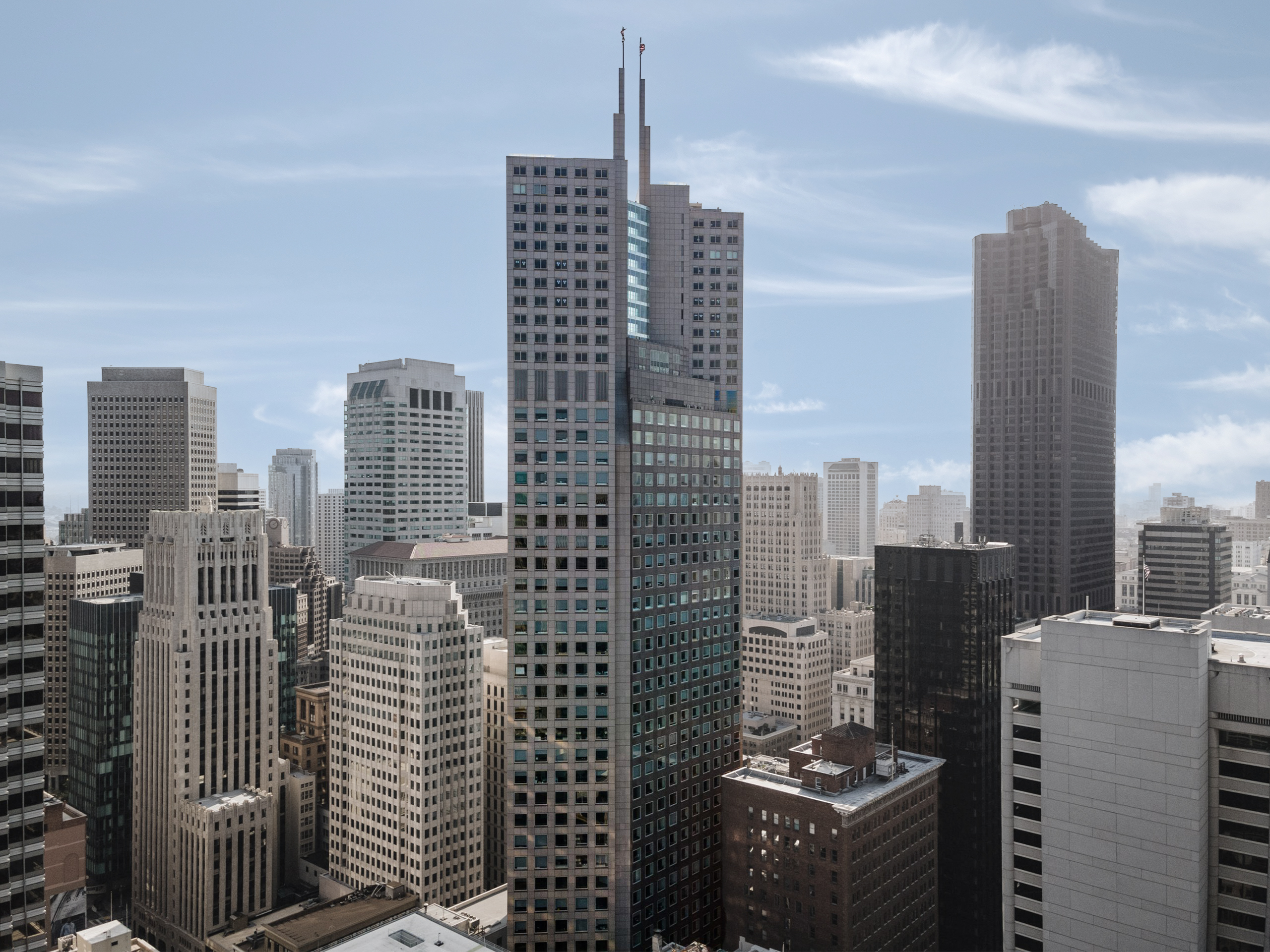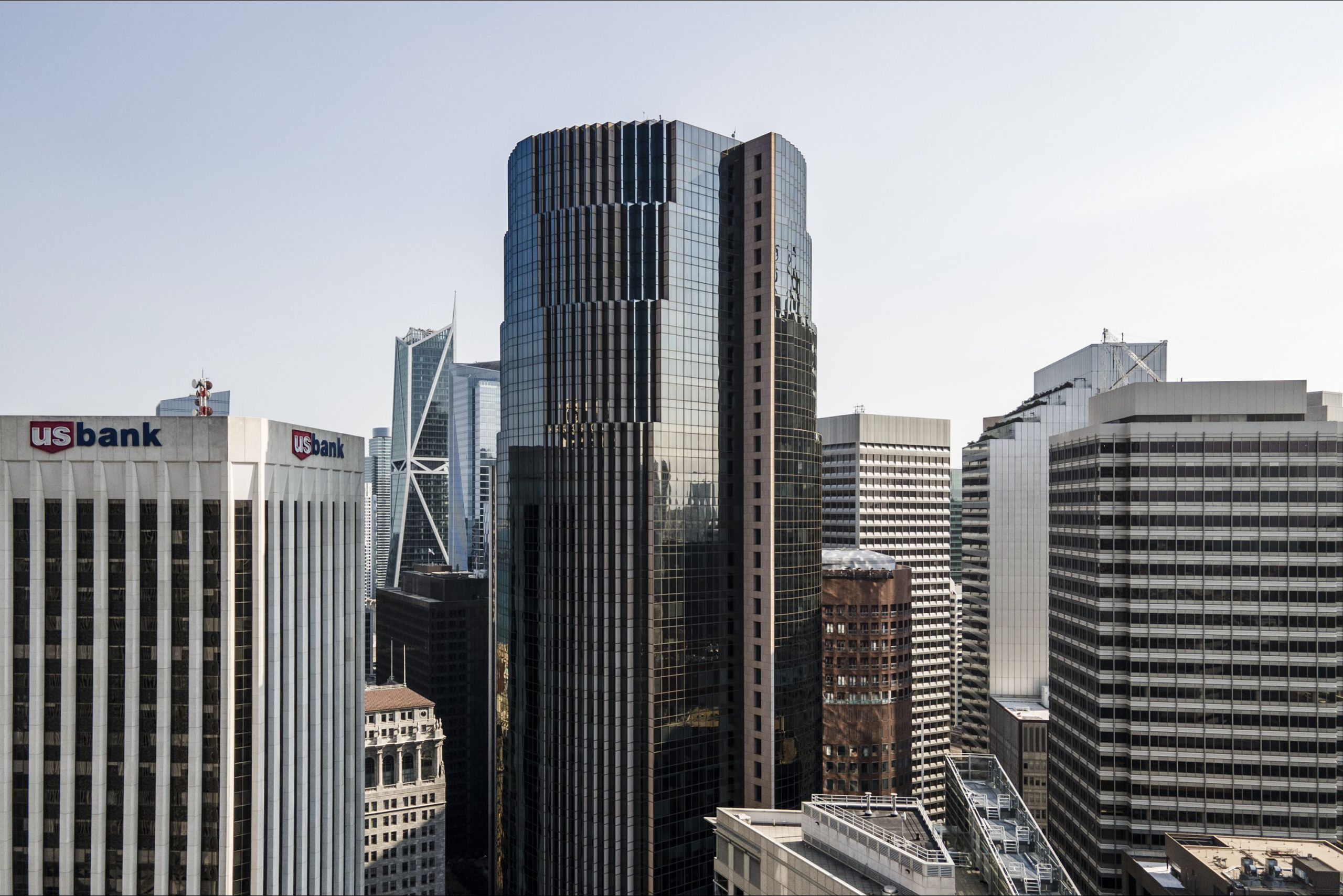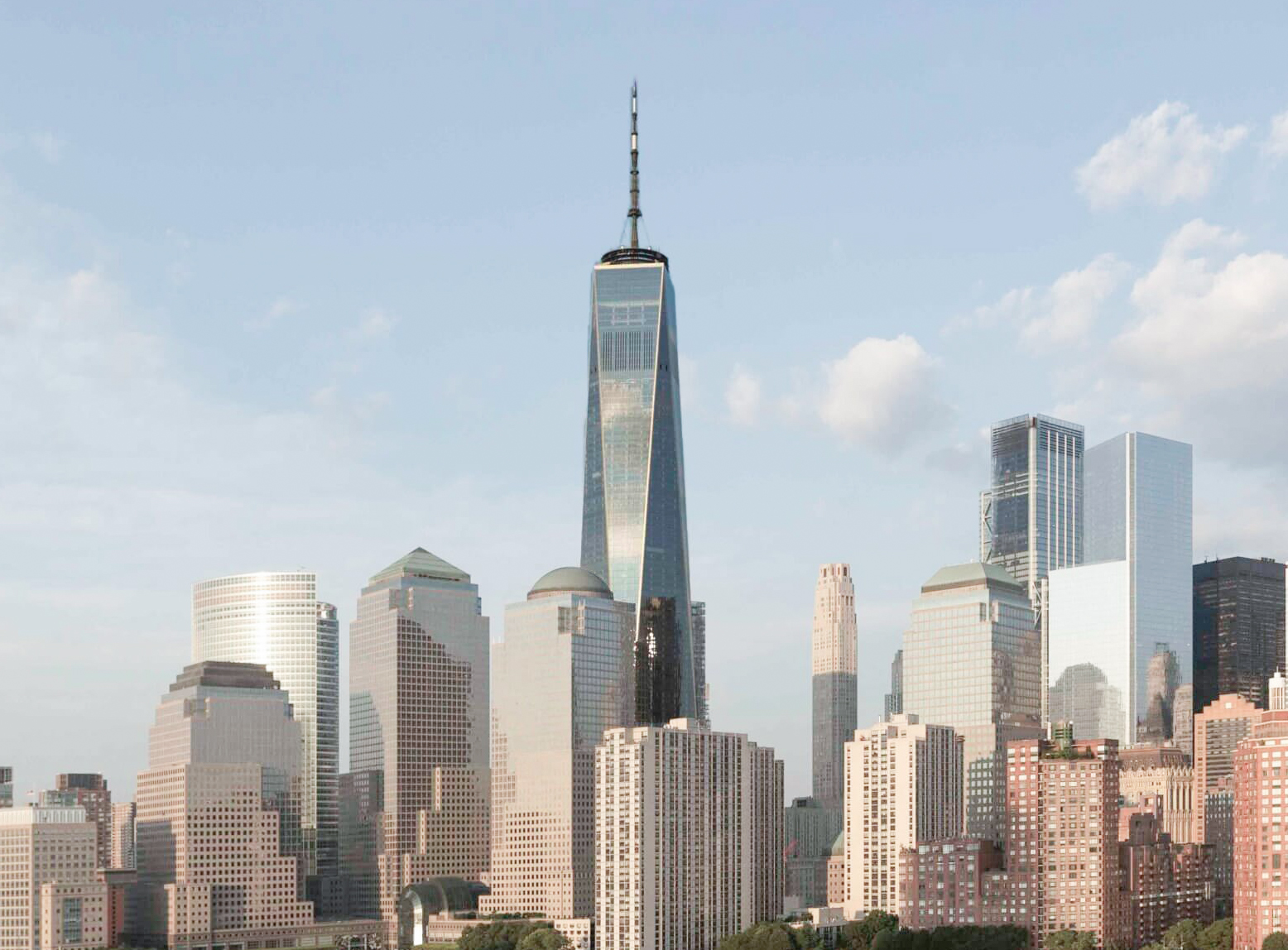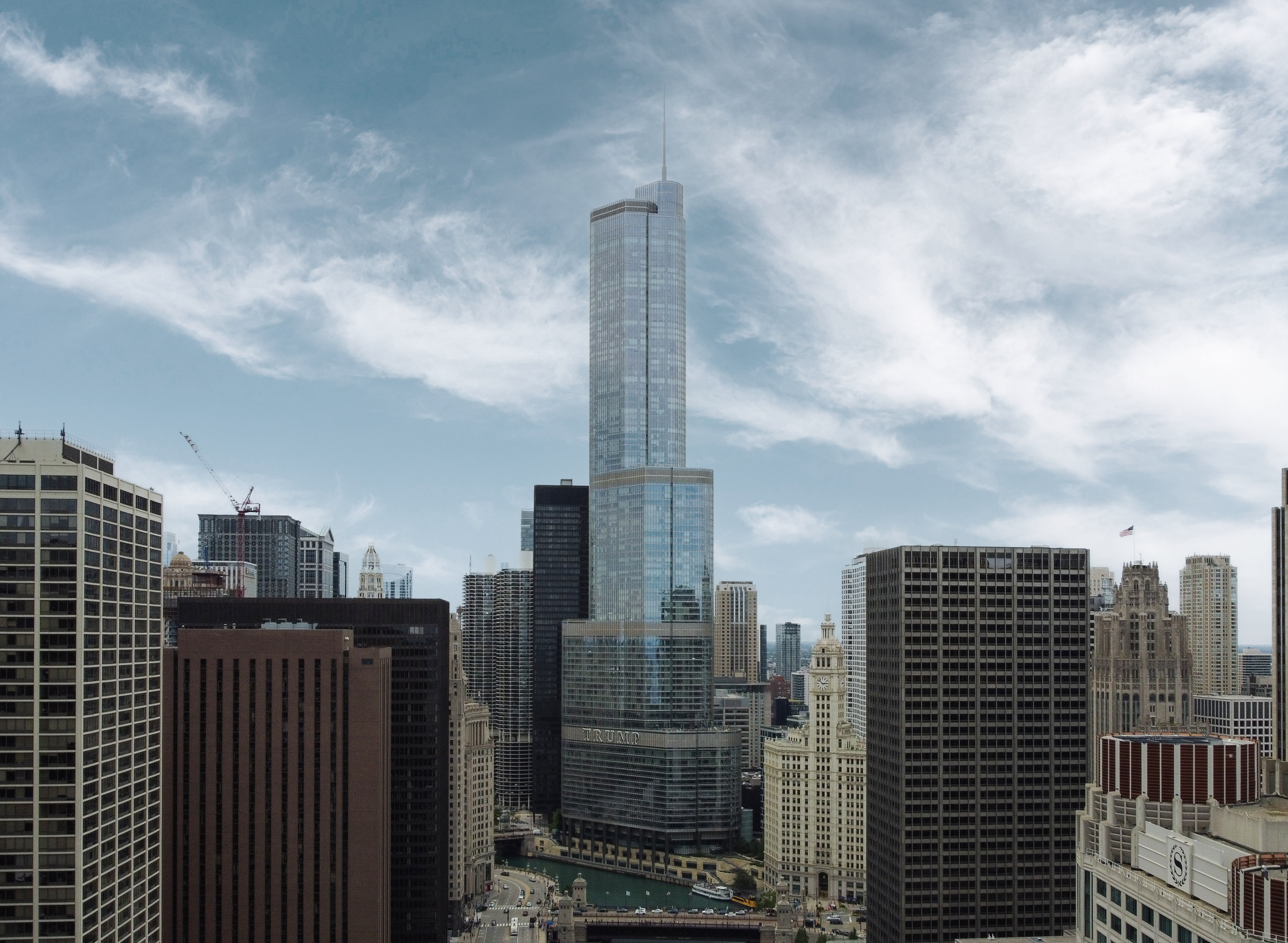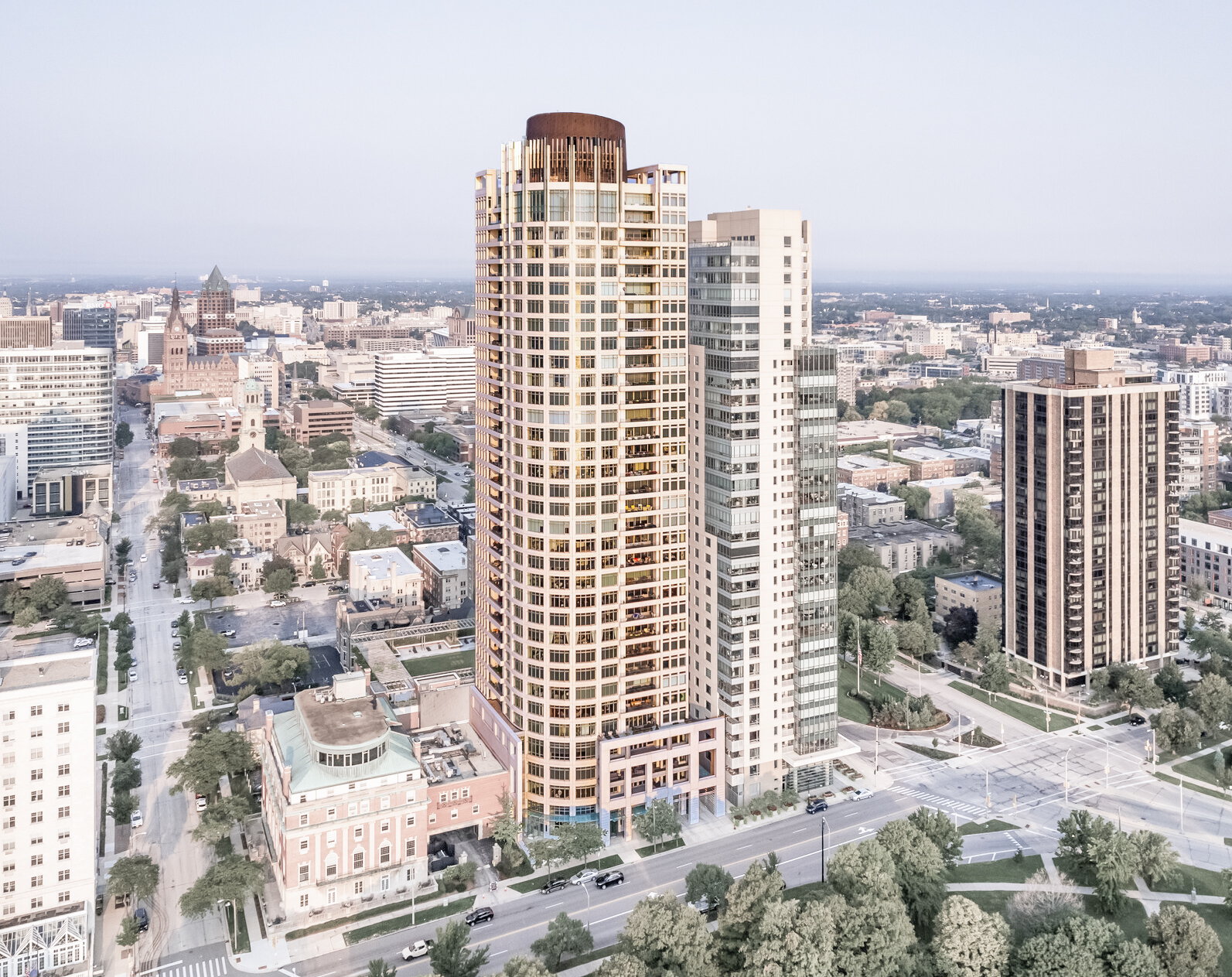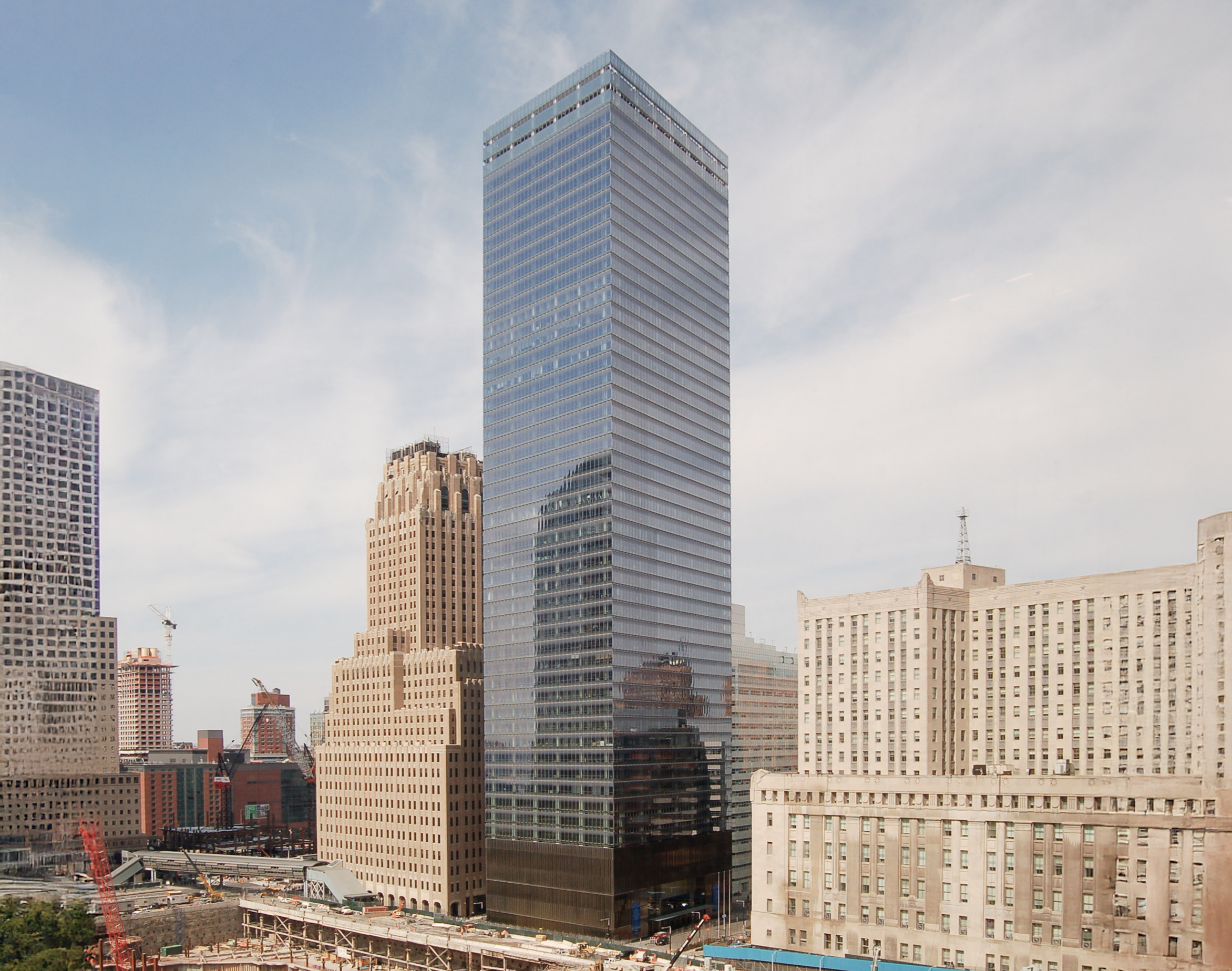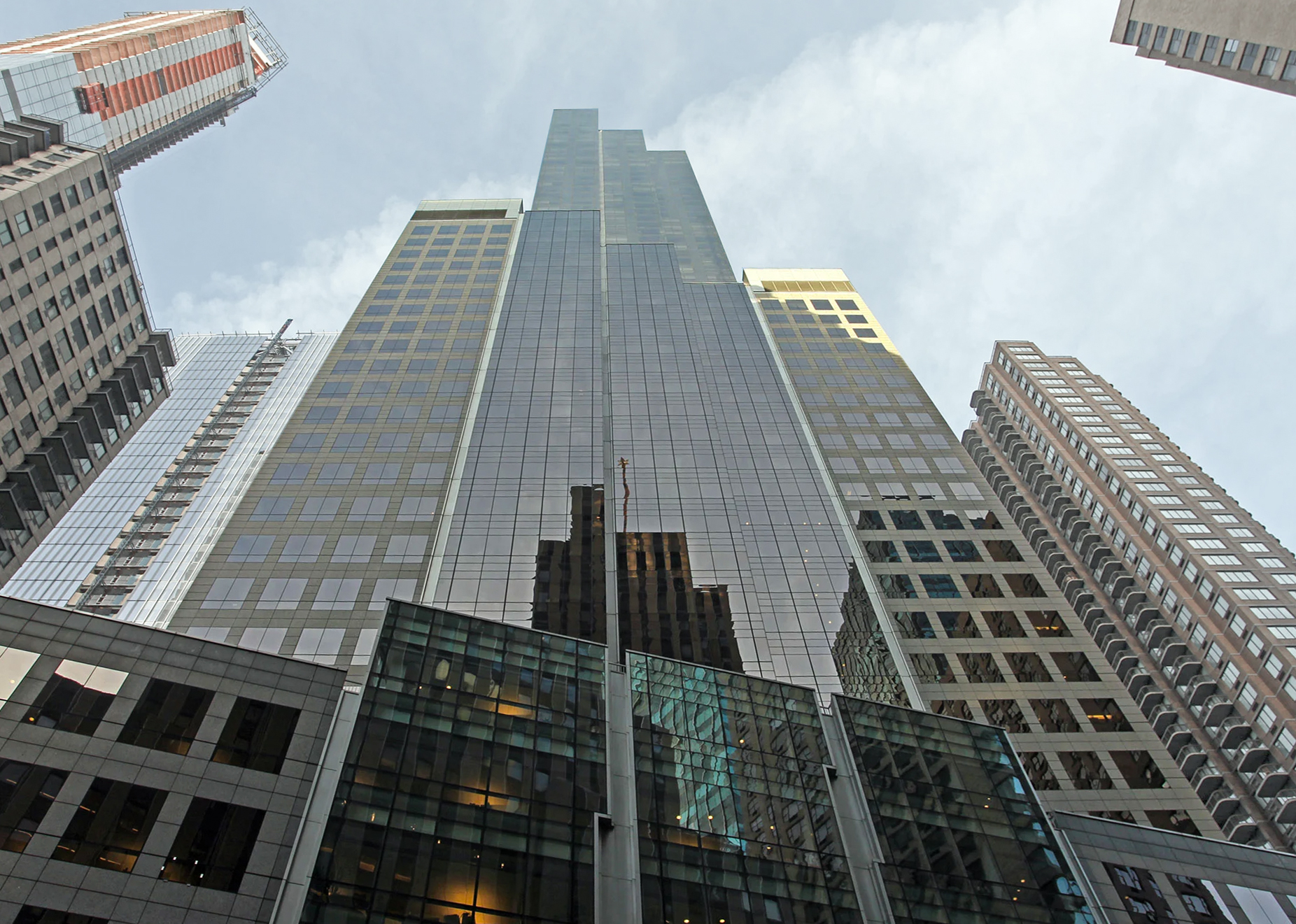The Salesforce West is a Postmodernist skyscraper designed by Skidmore, Owings & Merrill, and built between 1983 and 1985 in San Francisco, CA.
Salesforce West is not the only name you might know this building by though. Between 1985 and 2015 it was also known as 50 Fremont Center.
Its precise street address is 50 Fremont Street, San Francisco, CA. You can also find it on the map here.
The building has been restored 2 times over the years to ensure its conservation and adaptation to the pass of time. The main restoration works happened in 2015 and 2018.
